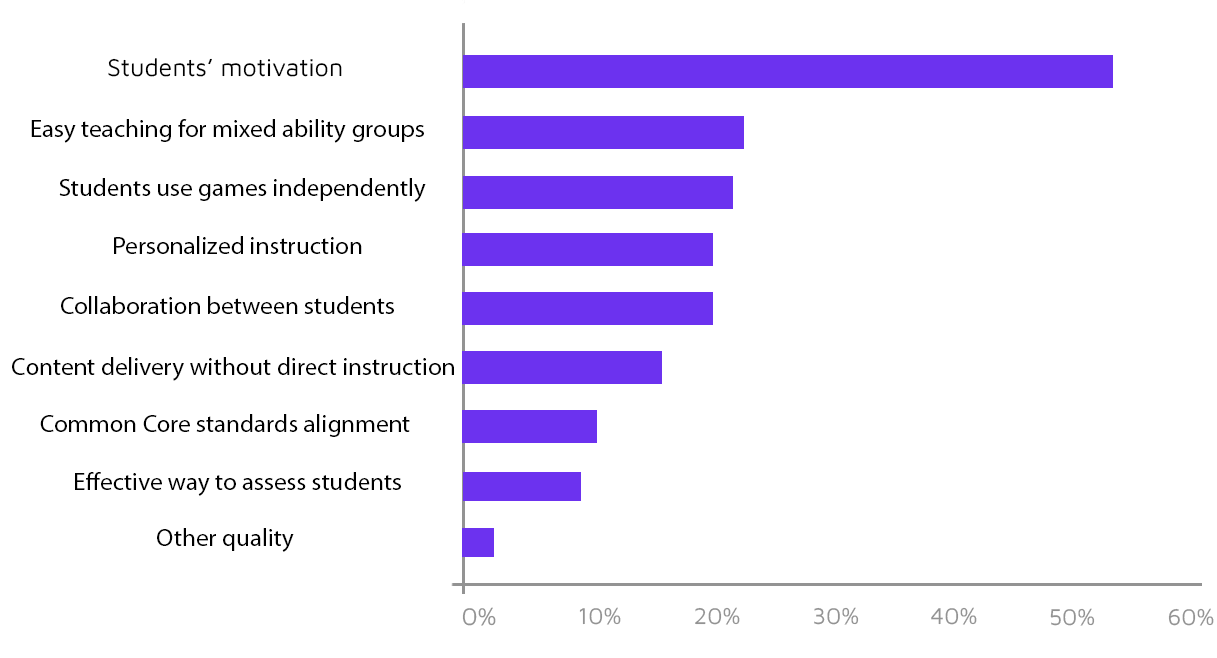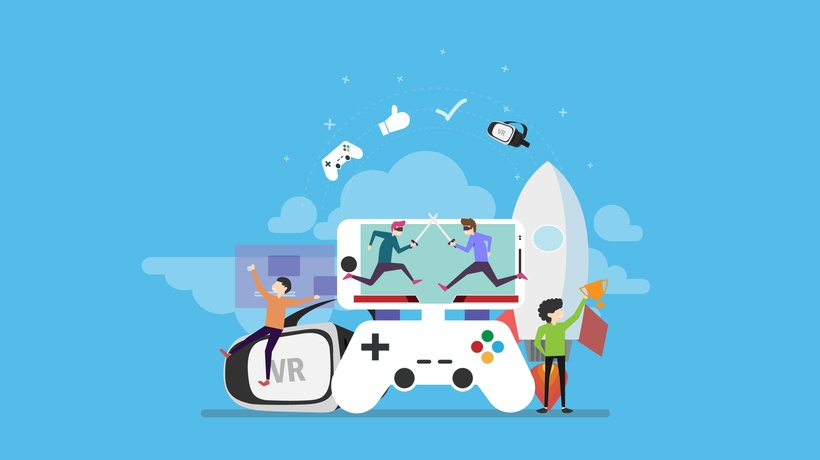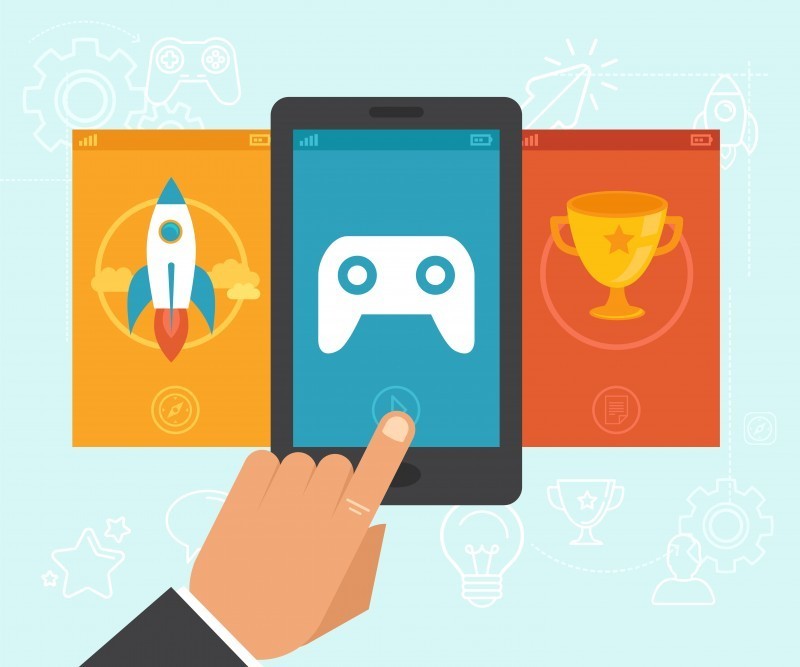How Gamification Increases The Number Of LMS Users
Gamification is the application of games and/or game elements in non-game environments. Education is one of the industries where gamification techniques have been used for years. Learning basic skills of logic, math, and communication through a game is one of the most efficient ways to engage students of all ages.
As traditional schooling seems to be boring for the new generation of students, teachers are starting to search for new ways to engage and motivate students. And learning application providers should keep pace with the latest trends in education to ensure the best experiences for both teachers and students.
A new approach involving game elements in the study process promises to transform the students’ perception of learning as a “routine.” Let’s see how gamification can be used in learning applications to increase students’ retention.
Gamification In Education
Teachers are into gamification for many reasons:

Source: Games and Learning
Although the concept and elements of gamification are basically the same for students of all age groups, the appearance and application principles can vary from elementary school to university.
K-12
Elementary School
We should admit: children love gadgets and video games. And every learning activity connected to these two raises their interest and doubles their focus. So gamification seems to be one of the most effective ways to teach kids.
The key element of any game is problem-solving. So by using game-based techniques, we teach children to cope with a series of challenges that get more and more complicated in order to advance. Children learn better through personal experience gained from pushing buttons and manipulating screens together with bright visuals and a soundtrack. By introducing game-based elements in the classroom, a teacher ensures children get instant feedback and learn from their mistakes.
One of the winning ways to introduce gamification into the educational process is by using a gamified Learning Management System. A gamified LMS helps children become part of the digital learning society, gaining the following skills:
- Computer literacy (how laptops, the internet, and a typical web platform work)
- Self-discipline (it’s up to the child to upload homework or remember to message a teacher)
- Netiquette
Secondary School
"An 8th grader plays video games an average of 5 hours per week." – Learning Federation
Secondary school is the place to find a balance between conventional teaching methods (lectures, reading, etc.) and gamification. Young students with experience in acquiring and polishing skills through games should start searching for other ways of gaining knowledge in order to be well-prepared for colleges and universities.
It’s time to start using only elements of gamification to achieve a specific goal instead of a gamified learning system.
Generally, gamification in the classroom does not necessarily involve using devices all the time, but it’s important to teach children that learning can be fun and the internet is not only used for entertainment.
Colleges And Universities
- "70% of college students play video games at least 'once in a while.'" – Pew Internet Research
- "60% of college students are regular game players." – Learning Federation
Gamification of the educational process is still relevant for college and university students, as it helps gain loyalty and retain motivation.
A more complicated approach is required to engage students, the older they are. Besides, at this stage, gamification techniques extend well beyond the classroom or Zoom lessons to reach different objectives.
Geocaching is a game based on solving riddles in order to find a coordinate. Individually or in teams, you can encourage your students to spend time outdoors acquiring knowledge of the subject in a practical way. This game can be used to onboard foreign students, create a friendly environment for a group of students, or build up team spirit with due attention to the learning process.
So, together with universal gamification elements that could be integrated into learning applications, custom solutions can be used with equal success in colleges and universities.
Gamification Elements For Learning Applications
Statistics show how many students across the globe play games. Why not take their passion and bring it to the academic world?
In general, educators have to search for the proper gamification applications themselves, and it would be great if we help them apply this approach by integrating the gamification elements into Learning Management Systems they use.
In fact, we can use the same gamification elements for all age groups and customize it according to end-user needs. Their proper integration into your learning application increases their chances of being noticed by both teachers and students.
Let’s see which functionalities in learning applications help engage and motivate the students:
| Function | Gamification Elements | Why Needed |
| Demonstrate progress |
|
Apparent progress and instant feedback encourage students to work more to reach the next level. The result of their work is visible right away compared to conventional learning techniques. Besides, leaderboards can be used to display not personal but team progress, cultivating a healthy competition and motivating students even more. |
| Personalize |
|
The possibility to customize everything to one's personal needs turns students into loyal advocates of a learning application and increases their engagement. |
| Reward |
|
Rewards are a tangible recognition of a student’s success. Starbucks or Amazon certificates, privileges in the classroom, etc. are good motivators for students to continue working hard. |
| Capture attention |
|
A fascinating story, which accompanies the learning process, adds meaning to studying and makes it more productive. |
| Discipline |
|
Time shortage forces students to make quick decisions and learn how to get their thoughts together under pressure. |
| Socialize |
|
Communication with friends and fellow students through games helps builds social interaction skills and team spirit, creating and strengthening the social connections in the class/group. So this becomes a good alternative for face-to-face meetings during online learning. |
Each of the above-mentioned game elements can be successfully implemented in a learning application to engage and motivate students.
Key Takeaways
- Game techniques involve students in a competition that help most of them perform better
- Students get instant feedback and immediate rewards instead of long-term value that seems to be unreal
- Except for hard skills, gamification helps develop soft skills, such as problem-solving and strategic thinking
The best thing about gamification is that it can be applied to eLearning as well as in the classroom. While many educators complain about the inefficiency of online learning and remote teaching, gamification can be the way to involve students in the learning process and keep them motivated, improving their academic performance and building loyalty toward your learning application.
Now, when nobody knows what to expect from the next academic year, it’s high time to polish your Learning Management System by adding the gamification elements to increase users' satisfaction rates and improve LMS usability.








